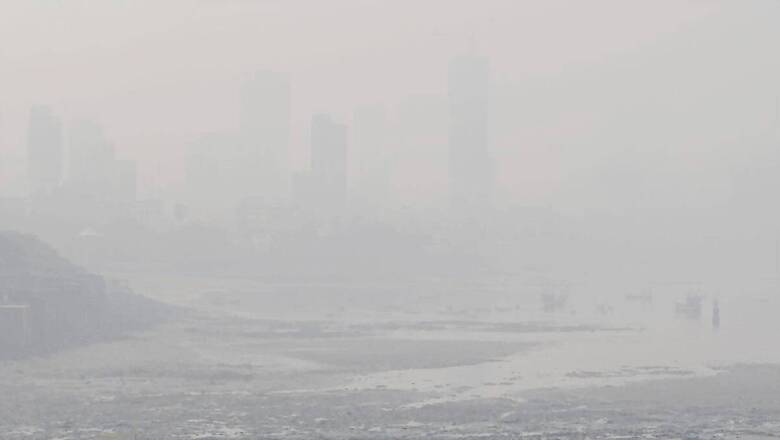
views
The winter of 2022-23 was unusual. While Delhi, one of the most polluted cities recorded an astonishing improvement in air quality, the PM2.5 values surged to unexpectedly high levels in the coastal city of Mumbai during October to January, surprising many. This abnormal change intrigued atmospheric scientists who dived in to investigate.
After a year-long research, the team led by scientists from Bengaluru-based National Institute of Advanced Studies (NIAS) and Pune-based Indian Institute of Tropical Meteorology (IITM) has published their findings in a peer-reviewed journal, Science of the Total Environment. According to the study, this ‘unprecedented’ variation in PM2.5 values in 2022 was due to a rare meteorological phenomenon linked to climate change.
WHAT HAPPENED DURING WINTER OF 2022?
The PM2.5 levels had shown a surprising variation over several Indian cities during the winter of 2022. While the pollution levels dropped significantly over Delhi, Noida and Ghaziabad compared to the national average of the past five years, cities in the south-west such as coastal Mumbai recorded a 30% increase in daily average PM2.5 values from October to January. In fact, Delhi not only just saw a reduction in the number of days with ‘severe’ AQI from 20 in 2021 to just six till December 2022, there were also no ‘severe +’ days, when AQI shoots up to 450.
“We noticed a peculiar shift in the wind patterns, speed and direction. The transport-level winds during November 2022 were mostly northerly and relatively faster. They escaped most of the NCR, and blew towards the south-west parts of India into cities like Mumbai. In the process, they led to a significant influx of pollutants, which would have otherwise choked Delhi in winter," said senior atmospheric scientist Dr Gufran Beig, Chair Professor at the National Institute of Advanced Studies (NIAS), Bengaluru and also the lead author.
Since the surface-level winds were relatively slower, the pollutants eventually got trapped as they intruded cities like Mumbai, which also saw frequent calmer wind spells and delayed cleaner-sea wind reversal during this period. All these factors combined together slowed down the dispersal of pollutants, which eventually worsened the air quality.
“In contrast, too feeble western disturbances (WDs) over North India, which normally govern the wind patterns during winter, the absence of rain, clouds and faster ventilation led to a significant improvement in air quality in the North," said co-author senior climate scientist Dr. R H Kripalani, from IITM, Pune.
WHY THE CHANGE IN WIND PATTERNS?
According to the team, this sudden change in air quality was due to the peculiar wind patterns, which may have been a manifestation of the first triple dip La Nina of the 21st century, which was in its retreat phase at that time. The team used a newly developed advanced NIAS-SAFAR air quality forecasting model for the study.
‘La Nina’ occurs when the surface waters over the equatorial Pacific Ocean become cooler. It is a naturally occurring phenomenon and occurs every two to seven years, but it lasted for consecutive years from 2020 to early 2023, thus a ‘rare triple-dip La Nina’. It is not normally known to influence air quality but according to scientists, its impact on circulation patterns in 2022 over India’s air quality was more potent due to its exceptionally prolonged phase.
LINK TO CLIMATE CHANGE?
Dr Beig, who was also the Founder Project Director of India’s first air quality forecasting system SAFAR at IITM-Pune, says climate change is influencing many natural phenomena like La Nina. It is also the first time that a study has established a link between air quality and climate change.
“Such episodes, in all probability, are set to increase if a number of drastic steps are not taken to address the root cause of deteriorating air quality, which is controlling emissions at the source. That should be our long-term strategy," he added.
















Comments
0 comment